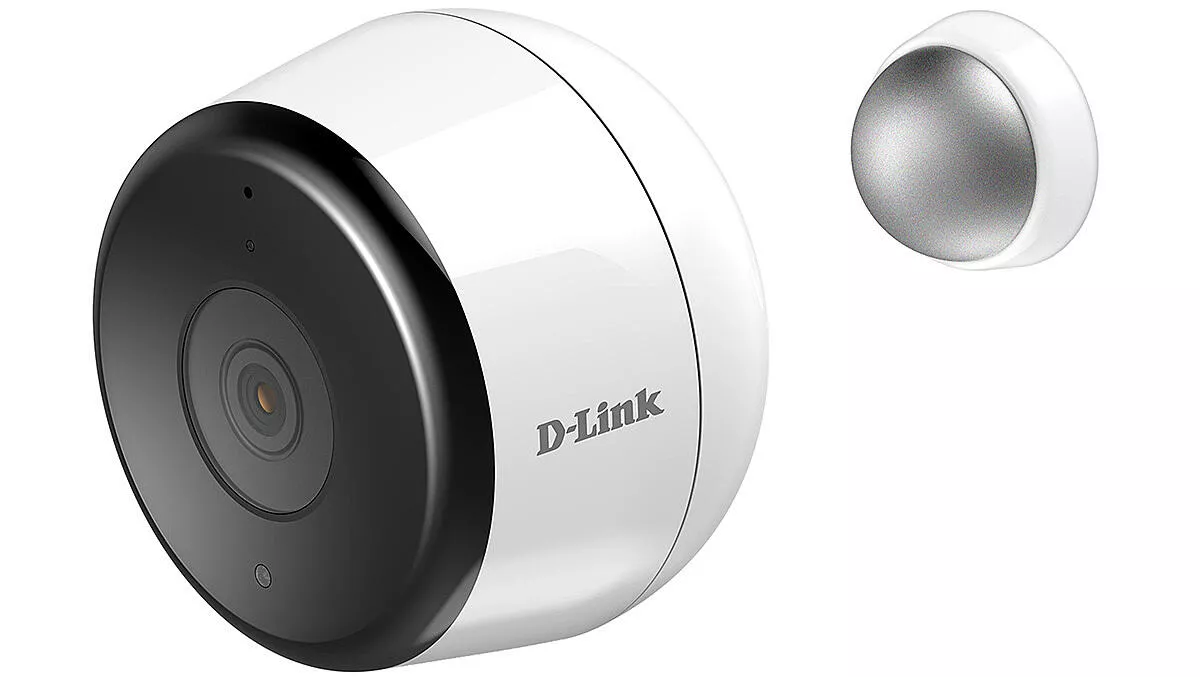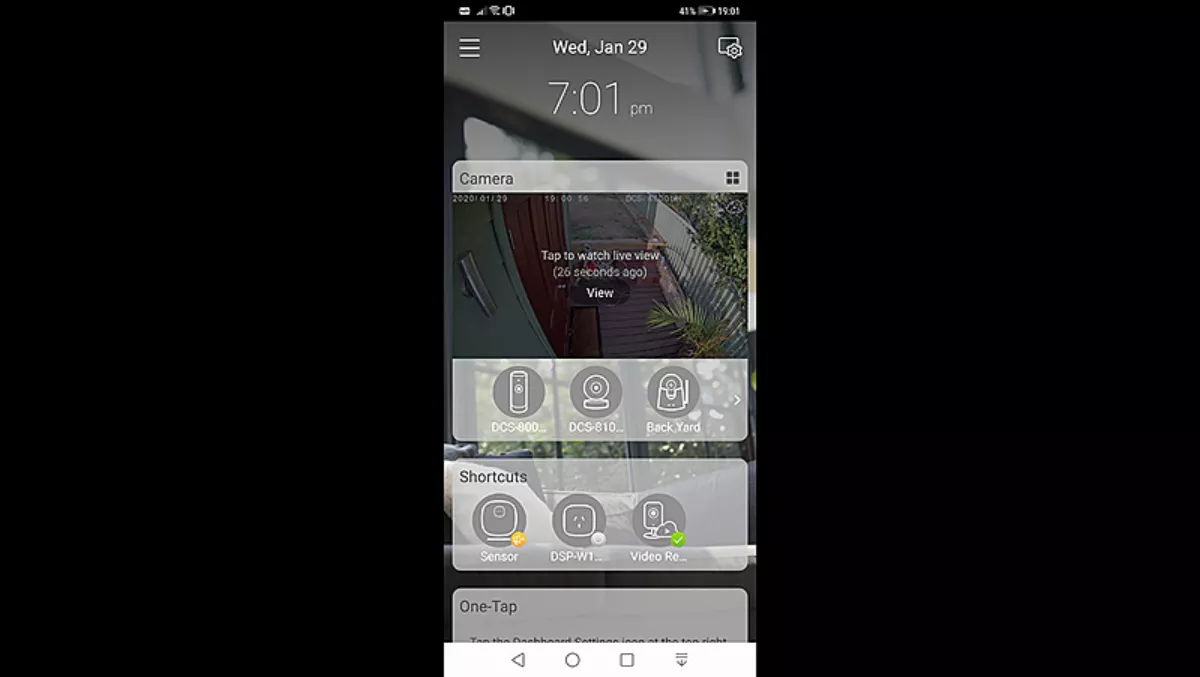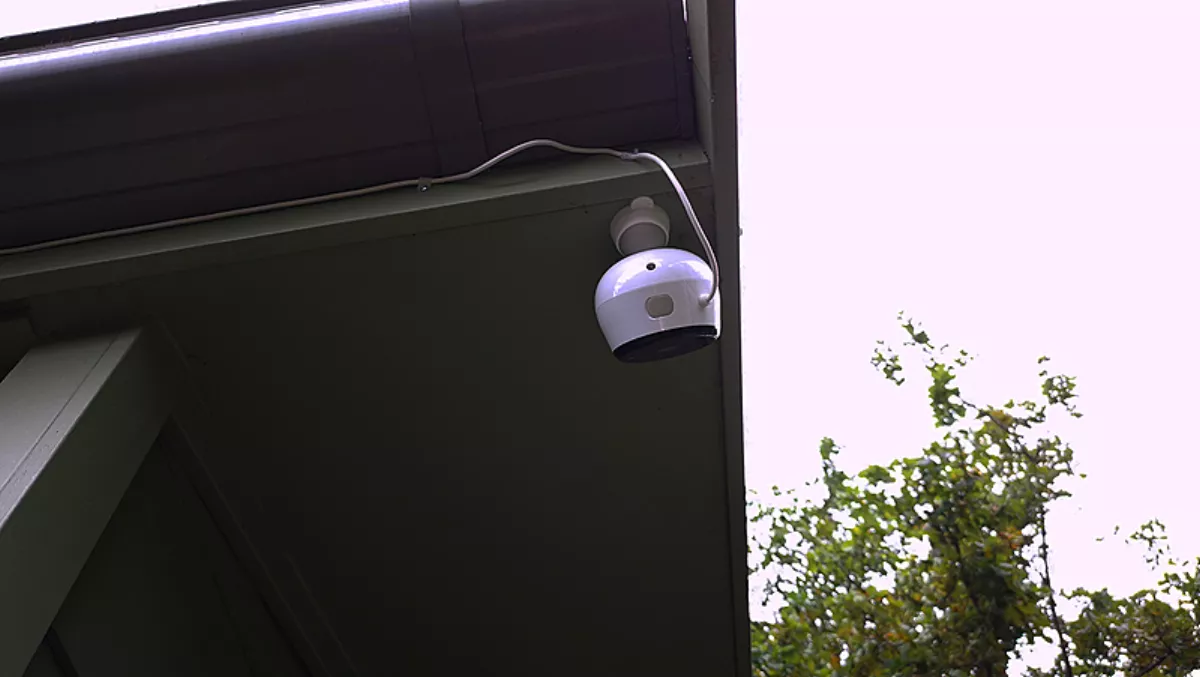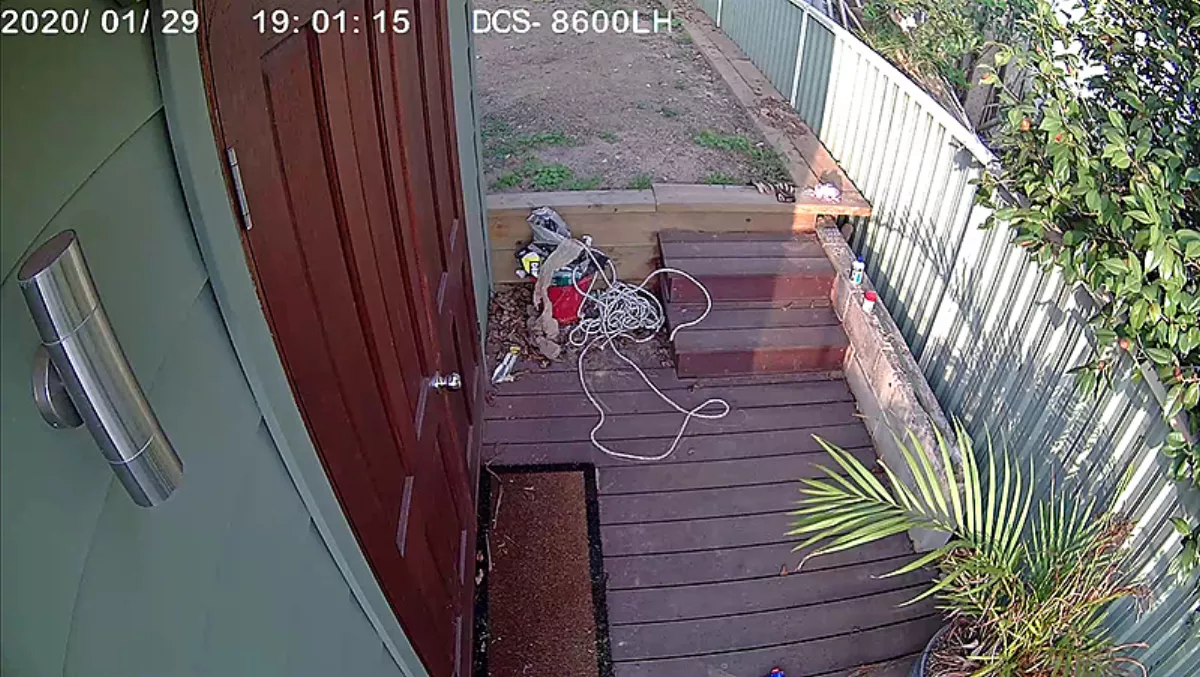
Hands-on review: D-Link Full HD Outdoor Wi-Fi Camera
D-Link's mydlink HD camera range gets a boost with the DCS-8600LH outdoor Wi-Fi Camera.
This camera looks the same as those supplied with D-Link's DCS-2802KT Omna wire-free outdoor camera kits. But instead of needing to be regularly recharged, the DCS-8600LH is powered via a USB cable connected to an included power supply.
Functionally, the camera provides a superior 1080p video feed, similar to all of D-Link's consumer security cameras. The camera has a number of infra-red emitters that switch on at night, which gives the camera about 7 metres of vision in complete darkness.
The camera uses the fairly robust mydink app to connect and control the camera. The camera can pick up motion and sound which the app can be used to trigger video record to the mydlink cloud service. The service offers users rolling 24-hour recording for up to three cameras at no charge. The premium services offer more support for more cameras and longer retention of video recordings.

Here in Australia, though, I've not managed to get the app to connect to the camera's over Optus' 4G network. It works fine locally over my Wi-Fi network. I can still access the cameras via the mydlink website. It's annoying, but not the end of the world.
The camera does, in my opinion, have a couple of design flaws.
Whilst the camera has a hole for a screw mounting, the kit only comes with a magnetic dome mount. These mounts, that are also supplied with other outdoor cameras in D-Link's range, allow for the coverage area to be easily finely adjusted, as required. The downside is that the camera can just be pulled of the mount. I can see the necessity for these mounts with camera that need to be removed for charging, but something a little more robust would be more appropriate for a permanently wired camera.
More annoying for the installation, is the huge coupling for the USB connector. For external use, it's likely that the wire will need to run into the premises to a power socket (unless you are fortunate enough to have an external power socket out of the way somewhere). This means drilling a 20mm hole to fit the entire coupling through, instead of 4mm hole for just the wire.
Fortunately, the external location I had planned had an outdoor power supply.
Having the connector some two metres away from the camera presented me with a bit of an issue finding a mounting location. The base is screwed down and the connector block clips into place. The only problem was that in screwing the mount in tight I buckled the plastic slightly making the connector block prone to unclipping. Not the best design, but something easily solved with a bit of glue, if needed.

One of the benefits of the magnetic mounting system is that the camera can be easily moved to cover a different area. I wanted a view of the office door, but a quick twist would give me a view of the whole yard.
The video quality is great. Even at night I really did get a good seven or so metres of black and white vison with the infrared feature. During the day, the camera provided a crisp, clear view of the coverage area. The camera also has two-way audio, allowing remote communication via the phone app, which works very well.
Sound and motion detection are used to trigger the camera record function which is then uploaded to the cloud for review as required. Video can be recorded locally with the use of an optional microSD card inserted into the back of the camera.
Whilst the remote access issues with the mydlink app were annoying, the camera itself and the remote access implementation via the mydlink website worked well. Anyone choosing D-Link's range of cameras for their home security will get on very well adding the DCS-8600LH to their system.



